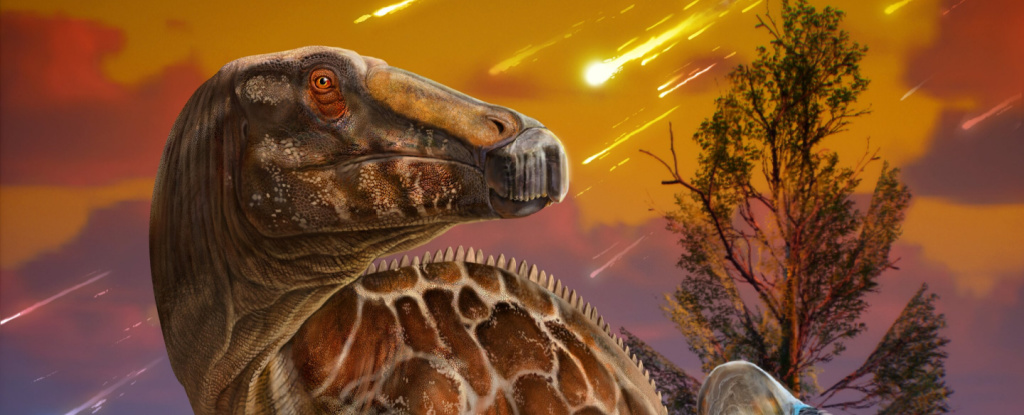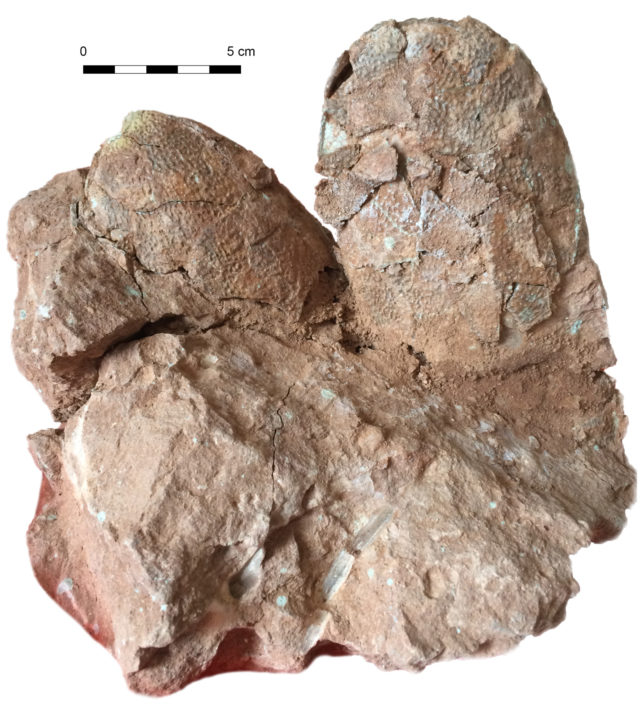The demise of the dinosaurs has long captivated paleontologists. Their mass extinction after a fiery meteorite pummeled Earth some 66 million years ago, as volcanoes erupted and global temperatures rose and fell, was a tumultuous end to the reign of these once-dominant beasts.
But now another study suggests dinosaurs were already on their way out millions of years before the fated meteorite hit, according to an analysis of over 1,000 fossilized eggshells unearthed in central China.

“Dinosaurs went extinct gradually over millions of years, instead of coming to an abrupt end from sudden disasters,” study author Qiang Wang of the Chinese Academy of Sciences told the South China Morning Post.
Expect those conclusions to be tested, though. The study weighs into a long and see-sawing debate amongst paleontologists about whether non-avian dinosaurs met an abrupt end or if they were already teetering on the edge of extinction before a 10-kilometer-wide asteroid sealed their fate.
The new research, from a team of geologists and paleontologists working in China, suggests dinosaur biodiversity was fading at least two million years before dinosaurs went extinct, at the end of the Cretaceous, leaving birds as their only living descendants.
Its conclusions are based on a collection of egg fossils, including several complete and incomplete dinosaur eggs, preserved in 150-meter-thick layers of rock that were deposited between 68.2 and 66.4 million years ago, right before the curtain came down on the dinosaurs.
The Shanyang Basin, where the egg fossils were found, is home to one of the most abundant dinosaur records from the late Cretaceous period. And yet the researchers only found three taxa of dinosaurs represented in the fossilized eggshells – a clear drop in biodiversity compared to older fossil records.
This decline in variation, the researchers suspect, might have weakened the dinosaurs’ collective ability to recover from the impact of the Chicxulub asteroid that struck modern-day Mexico or adapt to the turbulent environmental conditions of the time. With fewer options in their evolutionary playbook, they were snookered.
“Our results support a long-term decline in global dinosaur biodiversity prior to 66 million years ago, which likely set the stage for the end-Cretaceous non-avian dinosaur mass extinction,” China University of Geosciences researcher Fei Han and colleagues write in their published paper.
Despite their claims, the team rightly notes that the extinction of the dinosaurs remains contested for a host of reasons, such as “sampling biases in the fossil record, differences in the analytical approaches used, and the rarity of high-precision geochronological dating of dinosaur fossils.”
In their work, Han and colleagues used a suite of techniques to stratify thousands of rock samples encasing the fossilized eggshells, estimate the age of those samples, and construct a timeline with that data that had a resolution of 100,000 years.
Two of the three dinosaur eggs ‘oospecies’ (a species category for dinosaurs, when you just have eggs) identified in the mix were from a group of toothless, parrot-like dinosaurs called oviraptors, with the third group of egg-laying dinosaurs identified as herbivorous duck-billed hadrosaurids.

A cluster of fossilised dinosaur eggs found in central China. (Qiang Wang, Institute of Vertebrate Paleontology and Paleoanthropology/Fei Han and Chen Wen, China University of Geosciences).
The low species diversity that the researchers found matches with skeletal remains of ancient dinosaurs also uncovered in the Shanyang Basin, and is comparable to other fossil deposits in southern and eastern China, as well as some bonebeds in North America that also hint at declining dinosaur diversity during the same period.
That all “points to a lowered diversity and overall decline among dinosaurs on a global scale,” Han and colleagues argue, suggesting the decline might have resulted from global climate fluctuations and volcanic eruptions.
Other studies that have likewise suggested dinosaurs were prone to extinction have suggested that their diversity may have started dwindling as much as 10 million years before the meteorite smashed into Earth.
However, past studies have found otherwise. One recent, far-reaching analysis simulating dinosaur speciation – the rate at which new species appear – found that less than 20 percent of dinosaurs were in terminal decline before the asteroid impact, while other species were thriving.
The only way to resolve these conflicting interpretations, Han and colleagues conclude, is to find, sample, and analyze more fossils and to integrate existing data from fossil sites around the world to better understand extinction patterns.
Certainly not an easy task, but one that might help finally settle what happened in the fading light of the dinosaurs’ reign.
“Our study in Asia of abundant and geochronologically dated fossils is a major step in that direction,” the researchers write.
Src: sciencealert.com








